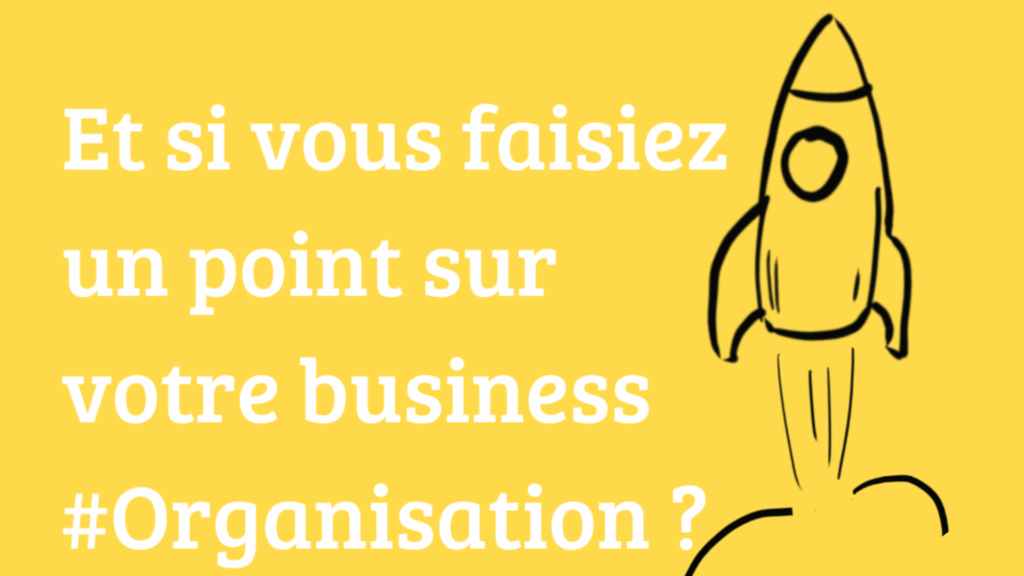💡 Why are 80% associations stagnating and how can this be avoided?
Spoiler: It's not for lack of energy or willpower.
Every year, thousands of associations are created around powerful human, cultural, or social causes. And yet... many reach a plateau after 2 or 3 years. Some even remain alive, even 15 years later, thanks to these indomitable and passionate Gauls at their helm. But in reality, they have no funds, very few resources (or are poorly used), and their membership numbers are regularly plummeting.
In short, French (and even European) landscape associations are "surviving" for many, much more than they are truly "prospering." One might even wonder if the initial motivations have been lost, after all these friendly meetings where people talk more about the weather than about the association's actual projects.
And even the age pyramid sometimes poses a question that any newcomer might ask, thus discouraging membership: "Is it a nursing home or an association?" With an average age exceeding 60, the observation often remains the same: low participation, failing structure, insufficient organization. The causes are multiple. And to say, here are some real causes:
- Little visibility
- Overwhelmed, poorly organized team
- Loss of meaning
- Lack of management and organizational skills
- President appointed by default (the former having resigned)
- Lack of members
- Difficulty recruiting, retaining members or raising donations
- No managerial or leadership skills
- Unclear projects or projects that go off in all directions
The end result is therefore predictable: volunteer burnout, constant team turnover, and a loss of collective motivation. The cause? The lack of a solid structure and a clear vision. In reality, dysfunctional associations share the same shortcomings as many businesses: weak leadership, sketchy organization, and a lack of strategic skills. This lack of volunteer training creates a considerable gap between the association's ambitions and the reality on the ground.
However, rest assured:
👉 It's not a lack of willpower.
👉 It's not "other people's fault" either.
It's just a lack of structure, strategy... and training.
In fact, the majority of people present in the associations come “all” from “everywhere and nowhere”.
However, to properly manage an association, without knowing its challenges, you must above all come from the world of "business". (Because an association is a business, but without the repair of annual profits between the members of the office).
So yes, if you have Speedwell, former trader at the head of the association, it is likely that the association has the beginnings of good management (like good business management). Except if you have at the head Bernard, a former house painter, it is unlikely that he has the skills to properly manage the association's finances, nor the strength or passion to deal with the administration and paperwork that goes with it. And even if we put by default Didier Or ChantalAs treasurer, it is also not certain that they have the skills to properly manage all these issues. Everything will depend on their own life path.
“But actually, what is a SIRET number?”
🧭 What we don't tell associations enough
Managing an association means managing an organization. With projects, beneficiaries, a team, a budget, and communication. Managing an association means managing an organization in its own right.
With :
- projects to pilot,
- beneficiaries to serve,
- teams to lead,
- a budget to balance,
- communication to ensure.
- finances to control
- volunteer recruitment to be done
- communication to develop
👉 In short: you have the same challenges as a small business, but often without the tools. In other words: nonprofits have the same challenges as a small, successful business, but without the tax, financial, or contractual complexities found in the corporate world.
And that's where association business coaching comes into its own. Not to turn you into a "start-up," but to help you achieve the success you deserve, or even to be able to make a living from your passion if you've chosen to create your association to do what you enjoy, when you're no longer employed (70% of association presidents are employed outside of it). So our goal is the following:
- Clarify your mission, your priorities, your projects
- Structure your governance and monitoring tools
- Establish a clear framework to avoid dispersion
- Professionalize yourself without losing your soul
- Develop your financing and partnerships
- And above all, find energy in your commitment
📌 The 3 mistakes that ruin associations
1. Confusing energy with clarity
Just because "everyone wants to do it" doesn't mean the project is clear. Or even that the project will work. Remember to clarify your objectives and your 6-12 month roadmap.
2. Operating on instinct… all the time
Yes, intuition is valuable. But without a method, you'll burn yourself out. Your team members won't understand where you're going, and ultimately, you might even end up going around in circles without even realizing it. Implement a lean but solid organization (roles, tools, priorities).
3. Never invest in yourself (or have someone accompany you)
Getting support isn't a luxury. It's what keeps you from having to reinvent the wheel in a stressful way.
👉 Business coaching tailored to nonprofits can save you 1 to 2 years. Whether in terms of finance, success, reputation, or even impact. Because how many elected officials or institutional leaders know how crucial timing is in certain nonprofit projects? If you don't jump on the bandwagon at the right time, the opportunity may very well never arise again.
✨ Structure ≠ bureaucratize
We're not talking about piling up processes or becoming rigid. Structure is about freeing yourself from chaos, regaining fluidity, and amplifying your impact. In reality, it's about putting in place the framework and methods so that you can have, as they say, "that GPS" that will help you get from point A to B without getting lost.
👥 And concretely, what is the association council?
Tailor-made support for:
- set out your vision and associative strategy,
- build appropriate governance,
- professionalize your management tools,
- develop your funding (sponsorship, memberships, subsidies),
- and above all… find energy in your commitment.
- Establish your vision and strategy
- Implement governance adapted to your size
- Professionalize your management tools (budgets, meetings, communication)
- Mobilize more (members, volunteers, partners)
- Develop your financial resources
- And above all: breathe new life into your collective project
In short, association coaching is like business coaching, but geared toward associations. Because let's not kid ourselves, between associations with strong cultural, economic, innovation, or even entertainment potential, and market companies, associations would have much more impact, enthusiasm, and success if they were better "steered" and "managed" than companies.
Unfortunately, associations are often led by "common people" who don't necessarily have a high level of education. Hence the fact that the association market is both a gold mine for consulting firms like us and a complex market because it requires educational support. And not everyone is necessarily an educator.
💬 What if we were honest?
Today, Volunteering is nothing like it was 50 years agoPeople are giving less time, but expecting more clarity, impact and recognition.
👉 Associations have a huge potential — cultural, human, economic.
👉 Their social impact often exceeds that of traditional businesses.
But this potential is wasted by a lack of training and structure.
🎯 The most powerful associations are those that are well managed.
And good news: it's sometimes easier (and more fun) to launch a well-structured nonprofit than to create a traditional business. So yes, you can make a living from a nonprofit when it's well-structured, well-funded, and well-supported. So, what if we worked together to make this happen?
🔑 To go further
📩 Want to talk about it? Make a diagnosis offered for associations, without obligation.




